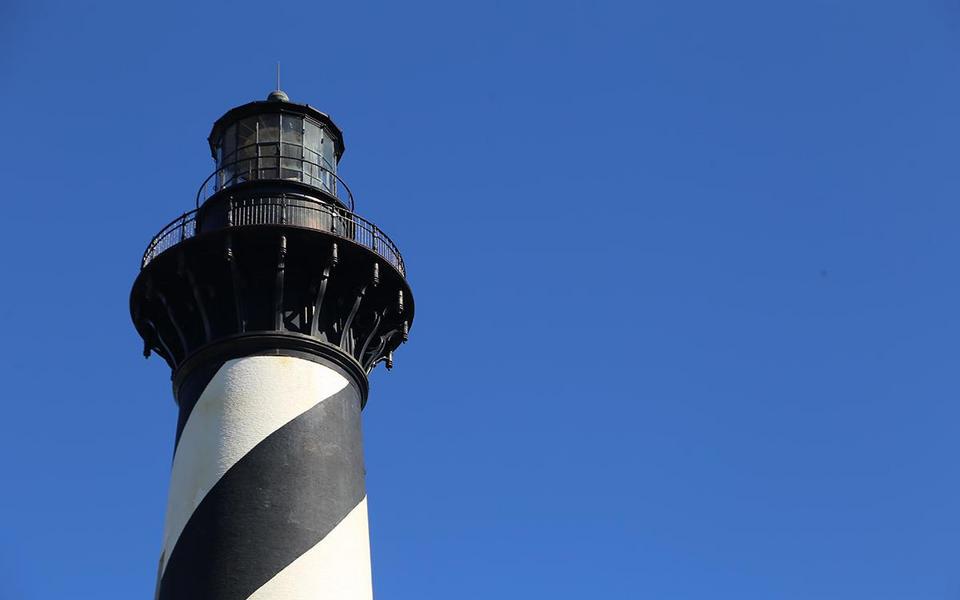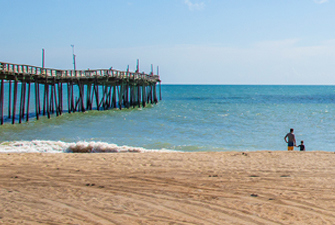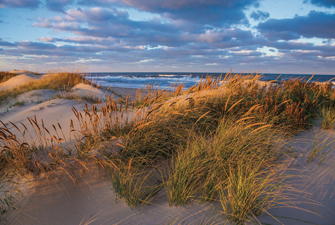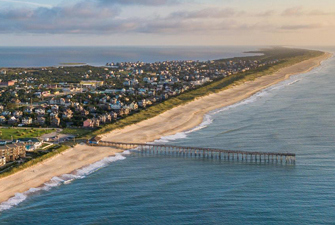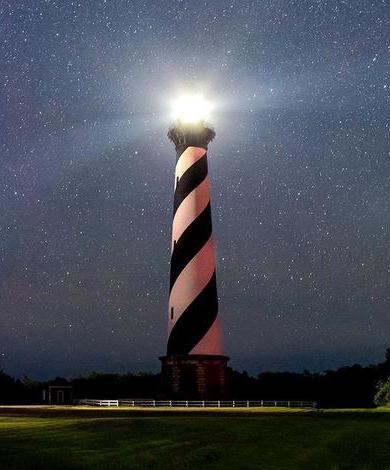
Cape Hatteras Lighthouse
Learn More about Cape Hatteras Lighthouse
As the tallest brick lighthouse in North America, Cape Hatteras Lighthouse is an iconic Outer Banks landmark. Its unique views, black and white candy stripe design, and rich history make it a must-see for Hatteras Island visitors.
The Early History of Cape Hatteras Lighthouse
Before Cape Hatteras Lighthouse was built, ships that plied the waters of the Outer Banks were in dangerous territory. Between the ever-changing currents off Buxton’s Cape Point and the treacherous Diamond Shoals, hundreds of shipwrecks took place. This stretch of water became known as the “Graveyard of the Atlantic.” In 1794, Secretary of the Treasury, Alexander Hamilton, requested that a lighthouse be built there after his ship almost crashed on the rocks.
By 1803, Cape Hatteras Lighthouse was functioning, but there were issues from day one. Only 90 ft. high, its visibility was practically useless, and it did little to help sailors navigate. Fifty years after the first lighthouse was built, renovations took place. The new lighthouse was 150 ft. high and had a Fresnel lens, which revolutionized lighthouse optics. However, the lighthouse was constructed of sandstone. The sandstone could not withstand the elements, and it began cracking. It was clear that the only solution was an entirely new lighthouse.
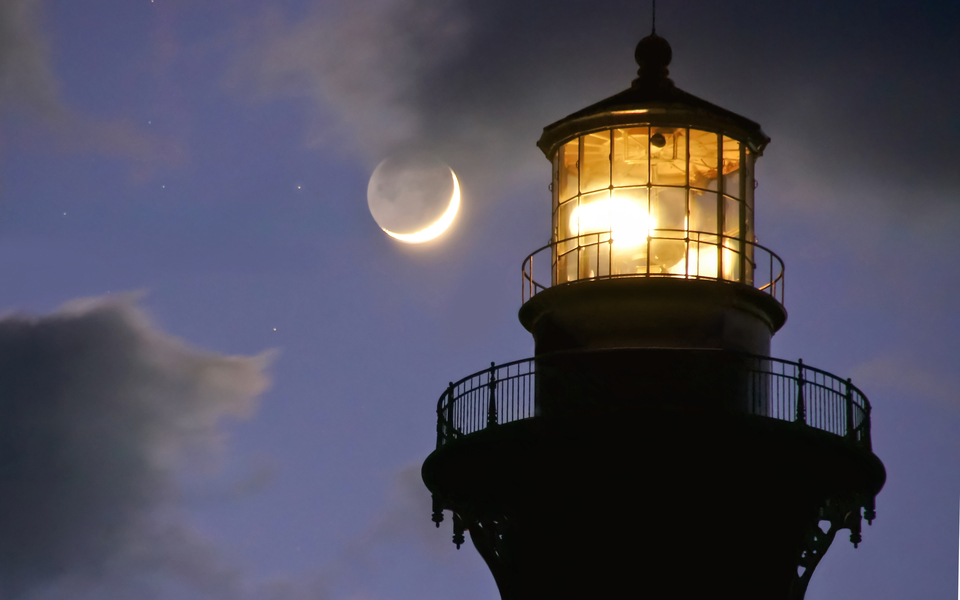
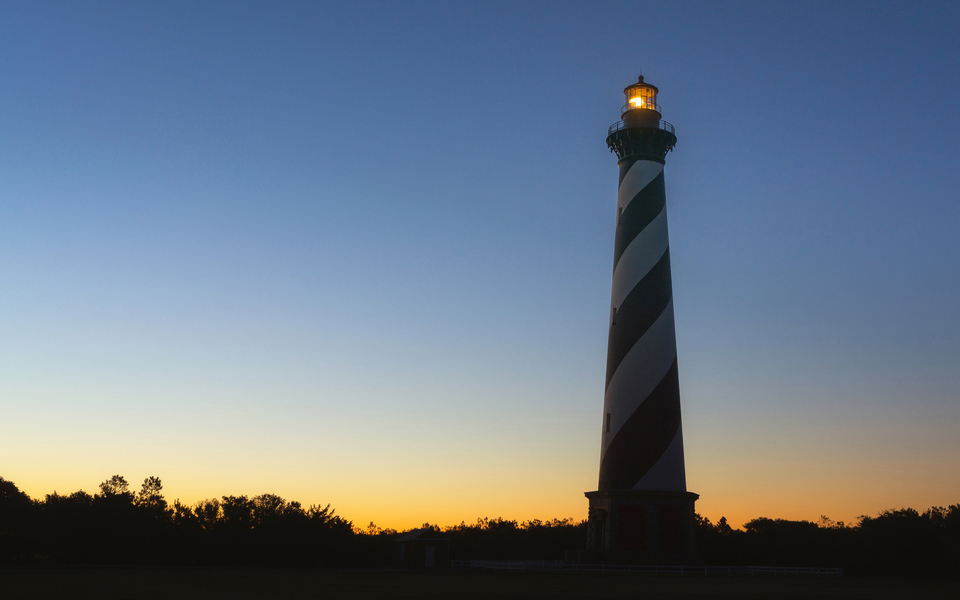
The Tallest Lighthouse in North America
Construction began, but there was a hitch. An engineer in charge of the design had intended that it have a black diamond pattern as an indicator of the dangerous Diamond Shoals. The engineer mixed the plans up with Cape Lookout’s lighthouse. This lighthouse ended up with the diamond pattern, while Hatteras Island’s lighthouse was given its distinctive black and white stripes.
In December of 1870, the new lighthouse was put into service. Towering at 210 ft., and 1,500 ft. from the water's edge, sailors and sea captains had a clear view of the shoreline. Comprised of roughly 1,250,000 bricks with an iron infrastructure, Cape Hatteras Lighthouse became the tallest brick lighthouse in North America and the second tallest in the world. The lighthouse has withstood decades of hurricanes with minimal damage.
The Great Hatteras Lighthouse Move
As it turned out, the solid Cape Hatteras Lighthouse could withstand storms but not erosion. In the summer of 1999, the lighthouse was carefully moved into Buxton Woods. This venture took a total of 23 days before reaching its new home. Despite both local and visitor concerns, the move resulted in no significant damage to the well-loved national landmark.
The lighthouse still flashes a beacon of light that is visible 20 miles out to sea, and it rotates every seven seconds. If you’re staying at one of our Avon or Buxton vacation rental homes, you might be able to catch a glimpse of it. Seeing the lighthouse in action is a pure thrill!
Visit Cape Hatteras Lighthouse
Visitors are welcome to tour Cape Hatteras Lighthouse by heading to Buxton. To learn whether the lighthouse is open for climbs, check out the website for the most up-to-date information.
Adjacent to the Cape Hatteras Lighthouse, you’ll find the Hatteras Island Visitor Center and Museum of the Sea. Stop into the museum and peruse the gift shop. Discover more about the lighthouse and the Cape Hatteras National Seashore! The park has picnic areas nearby and self-guided walking trails through Buxton’s maritime forest.
As one of five remarkable lighthouses dotting the Outer Banks, North Carolina’s Cape Hatteras Lighthouse is a unique beauty. Her views and story are an important part of the Hatteras Island experience. Contact us to learn about this exceptional site and more things to do on the Outer Banks, NC!
